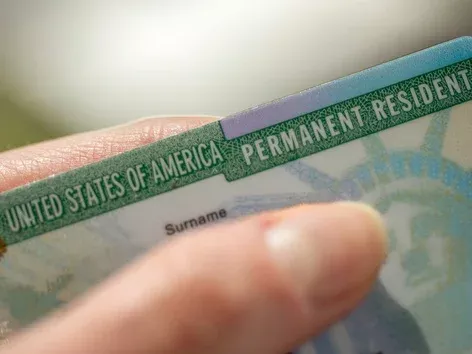Health insurance in the USA 2025: which plans to choose and how much does it cost?
Table of contents
- Health Maintenance Organization (HMO) Insurance Policy
- PPO (Preferred Provider Organization) Insurance Policy
- Exclusive Provider Organization (EPO) insurance policy
- Point of Service (POS) insurance policy
- HDHP (High Deductible Health Plan)
- Health Savings Account (HSA)
- How to choose the right health insurance plan in the USA?
- Employer-sponsored vs. Individual Insurance
- Tips for Immigrants, Students, and Newcomers

Health insurance in the USA is one of the main issues for those planning to live, work or study in this country. Find out what types of health insurance are available in the USA in 2025, how HMO, PPO, EPO, POS, HDHP and HSA differ, what are the average prices of plans and how to choose the most profitable option for yourself and your family
Health insurance in the United States of America is diverse and can include different types of plans such as HMO, PPO, EPO, POS, HDHP, and HSA. Each of these plans has its own features and benefits designed to meet the different needs and requirements of the policyholders. Let’s take a look at their detailed characteristics.
When planning a trip abroad, be sure to take care of a travel insurance policy that will protect you from unforeseen situations during the trip and compensate for unplanned expenses - for medical treatment, in case of lost luggage, flight cancellation, etc.
Health Maintenance Organization (HMO) Insurance Policy
A HMO is a health care system that brings together the insurer, providers, and patients into a single network. The basic idea is to limit the patient’s out-of-network care to ensure coordinated and affordable health care. A referral from a physician may be required to use out-of-network services.
An HMO brings together the insurer, doctors, hospitals, and other health care providers into a single network. Patients choose a Primary Care Physician (PCP) from the network who coordinates their care.
To receive specialized medical care, patients often need a referral from their primary care physician. This ensures coordinated and efficient care.
HMOs typically have low premiums compared to other types of insurance plans. However, patients may incur additional costs when visiting out-of-network doctors.
Patients are required to receive medical services within the HMO network. Choices of out-of-network doctors and hospitals may be limited or nonexistent.
Most often, HMOs impose copayments (a fixed fee for service) or fees for doctor visits. There is a high probability that most medical services will be fully or partially covered by insurance.
HMOs emphasize preventive health care and maintaining a healthy lifestyle. Regular medical check-ups and preventive measures are usually covered by the insurance plan.
Advantages of HMOs
1. Typically low premiums;
2. High level of coordinated medical care.
Disadvantages of HMOs
1. Limited choice of doctors and hospitals;
2. Referral required for out-of-network consultations.
PPO (Preferred Provider Organization) Insurance Policy
A PPO is a type of insurance plan that provides a wider choice of doctors and hospitals if they are in a "preferred" network. Patients can also get medical services out of the network, but at less favorable terms.
A PPO also has its own network of doctors and hospitals, but it is less limited compared to an HMO. Patients can get medical services out of the network, but at reduced rates in the network.
The distinctive feature of a PPO is that patients are not required to get referrals to consult specialists. They can go directly to specialists without wasting time getting referrals.
A PPO usually sets lower co-pays and deductibles for in-network medical services. In-network patients usually pay less for medical services. If a patient chooses to get medical services out of the network, the cost will be higher, but it may still be a reasonable discount.
The difference with PPO is that patients can receive medical services without choosing a primary care physician. There is no need for referrals for specialty consultations. PPO provides greater flexibility in choosing medical providers and does not require referrals for many services.
Advantages of PPO
1. Greater choice of doctors and hospitals;
2. No referral required for out-of-network consultations.
Disadvantages of PPO
1. Higher premium cost compared to HMO;
2. Cost of out-of-network services may be higher.
Exclusive Provider Organization (EPO) insurance policy
EPO is a combination of HMO and PPO elements. Doctors and hospitals must be in-network. Important: EPO usually does not cover out-of-network services, except in cases of emergency medical care.
The feature of EPO is that referrals from a primary care physician are not required for most medical services. Patients can independently consult specialists without prior approval.
In the EPO network, co-payments and deductibles for medical services are usually set. Patients pay less for in-network visits and procedures.
Advantages of EPO
1. Usually lower premium costs than in a PPO;
2. Choice of doctors and hospitals within the network.
Disadvantages of EPO
1. No out-of-network coverage (except for emergencies);
2. Limited choice compared to a PPO.
Point of Service (POS) insurance policy
POS is a flexible plan that combines the features of an HMO and a PPO. Patients can choose doctors and hospitals in the network or get services out of the network for an additional cost.
A POS has its own network of doctors and hospitals. If a patient gets services in the network, they are usually covered by the insurance plan.
For specialty services, a referral from a Primary Care Physician is usually required. Patients must choose a primary care physician who will coordinate their care. If a patient chooses to get services out of the network, the cost may be higher, but their costs are partially covered by the insurance plan.
Advantages of POS
1. Greater choice of doctors and hospitals;
2. Ability to get services out of the network.
Disadvantages of POS
1. Typically higher premiums compared to HMOs;
2. Often requires a referral for specialty services.
HDHP (High Deductible Health Plan)
HDHP is a plan with a high out-of-pocket cost, where the patient has a large out-of-pocket cost before insurance starts to cover the costs. This type of plan is usually used in conjunction with an HSA.
Important: An HDHP is not a separate type of network plan, but a feature that can be combined with an HMO, PPO, EPO, or POS.
An HDHP has a high deductible, which is the amount a patient must pay before insurance starts to cover the costs. HDHP patients pay most of their medical expenses until they reach the deductible.
Many HDHPs are linked to a Health Savings Account (HSA), which allows patients to save money for medical expenses with tax benefits.
Advantages of HDHP
1. Typically low premium costs;
2. Ability to use an HSA to save for medical expenses.
Disadvantages of HDHP
1. High out-of-pocket costs before coverage is available;
2. High out-of-pocket costs for medical services.
Health Savings Account (HSA)
An HSA is a savings account that can be used in conjunction with an HDHP insurance plan. The money in this account can be used to pay for medical expenses and is tax-free.
An HSA is linked to a high-deductible health plan (HDHP). Patients must have an HDHP to be eligible to open an HSA.
Contributions to an HSA can be made up to a certain limit, and these contributions can be used to cover medical expenses. Money contributed to an HSA is deducted from the patient’s gross income for tax purposes.
Unused funds at the end of the year do not disappear, but roll over to the next year. An HSA allows patients to save money for the future, using it when they need it. HSA funds can be used to cover medical expenses, including medications, doctor visits, equipment, and more.
Some patients over the age of 55 can make additional contributions to an HSA, which can be beneficial for preparing for medical expenses in retirement. HSA funds can be spent at any time on medical expenses, even if the patient does not have high medical expenses during the year.
Advantages of HSA
1. Tax-free savings on medical expenses;
2. Flexibility in using funds.
Disadvantages of HSA
1. HDHP plan is required to use an HSA;
2. Limits on the amount of contributions per year.
How to choose the right health insurance plan in the USA?
The right choice of insurance plan depends on your lifestyle, health status and financial capabilities. Below are examples to help you navigate:
1. If you are young and healthy
Optimal: HMO or HDHP + HSA.
Why: low premiums, emphasis on prevention, the ability to accumulate funds in an HSA.
2. If you have chronic conditions or need regular access to specialists
Best: PPO.
Why: No referrals required, wide choice of doctors and hospitals, including out-of-network options.
3. If flexibility and a balance of price and access are important
Best: POS or EPO.
Why: Wider choice of doctors in the network, the ability to get services out-of-network (with POS), without unnecessary bureaucracy with referrals (with EPO).
4. If you are planning family insurance
Best: PPO or POS.
Why: Convenient to coordinate medical services for several family members, while maintaining access to specialists.
5. If you are a student or new immigrant
Best: HMO or special student/short-term plans.
Why: Basic and affordable coverage at a lower price, focused on prevention and emergency care.
Employer-sponsored vs. Individual Insurance
Employer-sponsored (group) coverage is typically cheaper because the employer partially covers the premium and uses pre-tax contributions.
However, the average amount an employee pays can be higher than in the Marketplace, even with subsidies, because premiums are paid after taxes.
- Advantages of employer-sponsored: tax benefits, minimal hassle, often higher coverage and additional benefits (e.g. dental, wellness).
- Individual (Marketplace) - more flexibility in choosing a plan, the ability to change it regardless of work, the right to subsidies if the employer's plan is not available or expensive.
ICHRAs are growing in popularity - when the employer provides funds to purchase individual insurance, and the person chooses independently. Such coverage can be maintained even if they change jobs.
Tips for Immigrants, Students, and Newcomers
- For students/immigrants or those new to the U.S.: It’s often best to start with an HMO or specialty short-term plan – affordable, focused on preventive care and essential procedures. These options are often less expensive and less complex.
- Helpful Tools: Use KFF’s Marketplace Calculator to help estimate potential premiums and subsidies – updated for 2025.
- Important: Check to see if the plan is ACA-compliant, especially if you’re considering subsidies. Some low-cost options (such as short-term insurance) may have limitations and may not guarantee coverage for essential services.
Health insurance in the US is a complex but flexible system that allows everyone to find the best option for their needs, health status and financial capabilities. The choice between HMO, PPO, EPO, POS, HDHP or HSA depends on what is more important to you: low premiums, a wide choice of doctors, the ability to save money or the convenience of coordinated care.
It is also important to consider whether you get insurance through an employer or buy it yourself on the Marketplace. For immigrants, students and those just starting life in the US, the best solution is often basic or short-term plans that provide minimal but necessary protection.
The main thing is to carefully analyze the terms of the policy, compare costs and coverage, as well as use available tools to assess subsidies and benefits. A conscious approach to choosing insurance will help avoid unexpected costs and provide confidence that medical care will be affordable and of high quality if necessary.
Looking for reliable health insurance? Don't waste time on complicated comparisons - our consultants will help you find the best solution for your family, students or newcomers to the USA. High-quality coverage, clear conditions and transparent tariffs.
Reminder! The USA updated its naturalization rules in 2025. We have already told you what has changed in the requirements for "good moral character", what documents need to be prepared and how the new approach will affect candidates for citizenship.
Products from Visit World for a comfortable trip:
Checklist for obtaining a visa and necessary documents in the USA;
Legal advice on immigration to the USA;
Travel insurance for foreigners in the USA;
Medical insurance all over the world.
We monitor the accuracy and relevance of our information, so if you notice any errors or inconsistencies, please contact our hotline.
Frequantly
asked questions
What type of health insurance in the USA is the cheapest?
Can new immigrants immediately get insurance in the USA?
Recommended articles
1 min
Popular
Visa Bond Program USA 2025–2026: Full List of Countries, Rules and Deposit Requirements
In 2025, the US introduced a new Visa Bond program for citizens of countries with high rates of visa violations. Find out which countries are included in the Visa Bond program in the US 2025–2026, how the visa bond works, its cost, refund conditions, and which airports are allowed for entry and exit
14 Oct. 2025
More details2 min
Popular
Where to Get a US Visa Appointment Faster in 2025: Wait Times by Country
Planning to get a visa to the USA? Find out where to apply for a visa to the USA faster in 2025. Updated waiting times by country, expert advice on reducing delays, and help from a professional immigration lawyer
11 Aug. 2025
More details1 min
Expats
The U.S. immigration system will undergo significant changes in 2025: USCIS updates CSPA rules for children, and the Dignity Act offers expedited green card processing, premium options, and reform for long-awaited applicants. Find out how this will affect your chances and green card queue
15 Aug. 2025
More details2 min
Expats
Starting August 21, 2025, USCIS will begin rejecting immigration applications without full payment of fees. Learn what the new fees are, which forms have become more expensive, whether you can get a fee waiver, and what applicants need to do to have their applications accepted.
21 Aug. 2025
More detailsAll materials and articles are owned by VisitWorld.Today and are protected by international intellectual property regulations. When using materials, approval from VisitWorld.Today is required.
